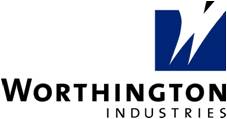Innovative Leadership Significantly Impacts Worthington Industries Bottom Line by Facilitating Successful ERP Transition
by Maureen Metcalf and Ralph Spitzen
Company Profile
 ‘One of the Most Admired Companies in its industry per Fortune magazine, Worthington Industries, founded in 1955, grew from humble beginnings to a multi-billion dollar metal processing company. Today, the firm employs 8,000 people in 67 facilities throughout 11 countries. The company credits its success to its customer-centered philosophy based on the Golden Rule. This philosophy, in addition to an unwavering commitment to the customer and one of the most robust employee/employer partnerships in American industry, serves as the company’s foundation.
‘One of the Most Admired Companies in its industry per Fortune magazine, Worthington Industries, founded in 1955, grew from humble beginnings to a multi-billion dollar metal processing company. Today, the firm employs 8,000 people in 67 facilities throughout 11 countries. The company credits its success to its customer-centered philosophy based on the Golden Rule. This philosophy, in addition to an unwavering commitment to the customer and one of the most robust employee/employer partnerships in American industry, serves as the company’s foundation.
Challenge and Vision
With the continuing growth and diversification of Worthington Industries, inventories naturally grew as well. As with many manufacturing firms, inventory significantly impacts revenue and cash flow. Maintaining inventories larger than necessary negatively impacts the bottom line. Thus, the firm wanted to gain better insight into its inventories and processes and increase its supply chain information to a higher level of detail.
The company had a vision of further improving the level of customer service while using less working capital and inventory. To achieve this goal, the organization needed to evaluate every process that impacted supply chain management and inventory. It surfaced every issue that prevented the firm from providing better customer service—it identified and implemented new processes.
The goal of the company was to improve its overall bottom line by focusing on the following areas:
- Improving overall business processes
- Improving inventory management
- Reducing scrap
- Increasing efficiency of operational processes from the sales order process to purchasing and logistics.
The Solution:
The technology chosen to support the goal was Oracle’s ERP solution. However, implementing the system across a large organization would require much more than a technology installation. To be successful, Worthington needed to make organizational changes, learn new processes, and change how it did business.
“I hired Maureen Metcalf and the Innovative Leadership Institute as a consultant to help us migrate our organization from the existing environment to the vision we had for more efficient processes,” explained Ralph Spitzen, Director of Continuous Improvement, Worthington Steel. We were looking for someone who was schooled in organizational change management and would bring a defined approach and methodology for managing the necessary changes.
“Maureen worked with us from a high level to develop a strategic plan to bring about change. The implementation of the Oracle system also required us to review a level of detail such as evaluating positions, defining new roles, and determining what the new organization would look like,” noted Spitzen.
Metcalf & Associates (now Innovative Leadership Institute) took a holistic view of the challenges and made practical recommendations that could be implemented in a manufacturing environment. They quickly delivered tangible value and modified their approach when changes arose. Their contribution made a significant impact on our ability to implement successfully. Metcalf created much of the foundation material that allowed for successful implementation, including tools such as:
- An end-to-end flow chart defines business processes impacted by the system—with color coding indicating the impact of change on people, customers, high-risk areas, and new processes.
- An online tool to explain and communicate the changes to the entire organization and each job function.
- A job re-definement before the system launch helped to minimize the change in high-impact positions.
- Standard operating procedures for processes that would change significantly.
“Metcalf’s ‘start, stop guide’ was a useful tool for Worthington Industries. All the actions and processes the organization needed to stop, continue, and start doing were listed in a formal document that served as a plan for implementing change. The key was to communicate the plan thoroughly and repeatedly throughout the organization to everyone involved or affected in any way,” explained Spitzen.
“Maureen was instrumental in helping to create a communications plan and to build training programs around the changes needed,” said Spitzen.
“We’re committed to achieving a higher level of customer service with less working capital and inventory,” said Spitzen.

Leave a Reply
Want to join the discussion?Feel free to contribute!